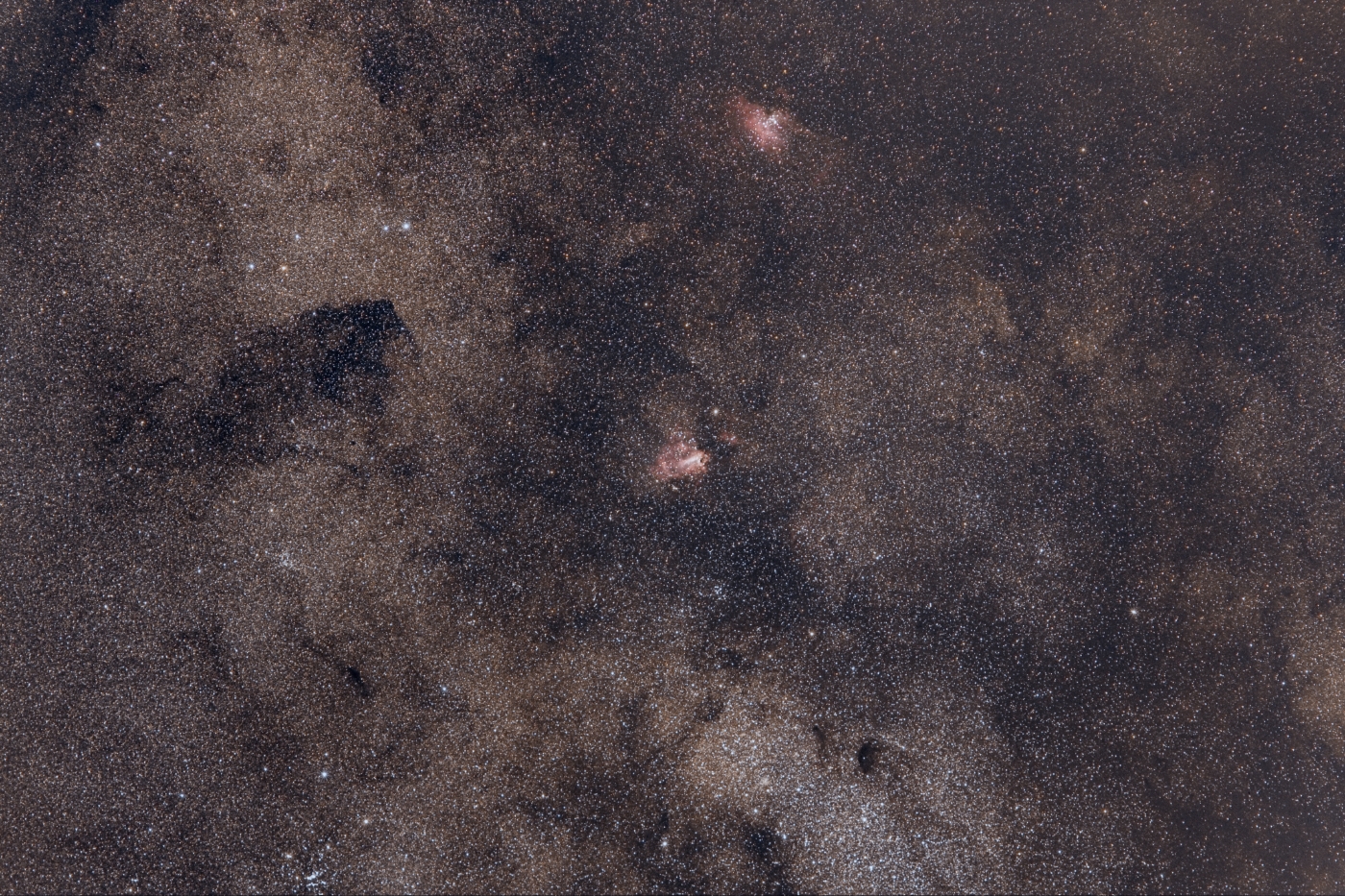
Move your mouse over the image above to get a version with constellation lines, deep-sky objects and labels drawn.
Messier objects 16, 17, 18, 24 and 25 are located in a star-rich and dense area of the Milky Way, where the constellations Sagittarius, Serpens and Scutum meet. M16 and M17 are the bright nebulae on top and at the image's center, respectively. M18 is a small and inconspicuous cluster of stars below M17. M24 is the large cloud of white stars at the lower edge and slightly to the right.
This area is notable not only for its abundance of nebulae and star clusters, but also for its Milky Way structure - especially the interstellar dust blocking our view towards the bulge near the center of the Milky Way. Notice the many dark lanes crisscrossing this image. The interstellar dust leaves only a few windows through which we get a rare glimpse of what lies behind, one of those is M24, the Little Sagittarius Star Cloud. The whitish original color of its stars is explained by the near-absence of interstellar dust within this window. The presence of dust colors nearly all other Milky Way star clouds in this frame in a yellow-brownish hue.
 M17 - Omega Nebula and Surrounding Area, telelens photograph
M17 - Omega Nebula and Surrounding Area, telelens photograph
Exposure Data